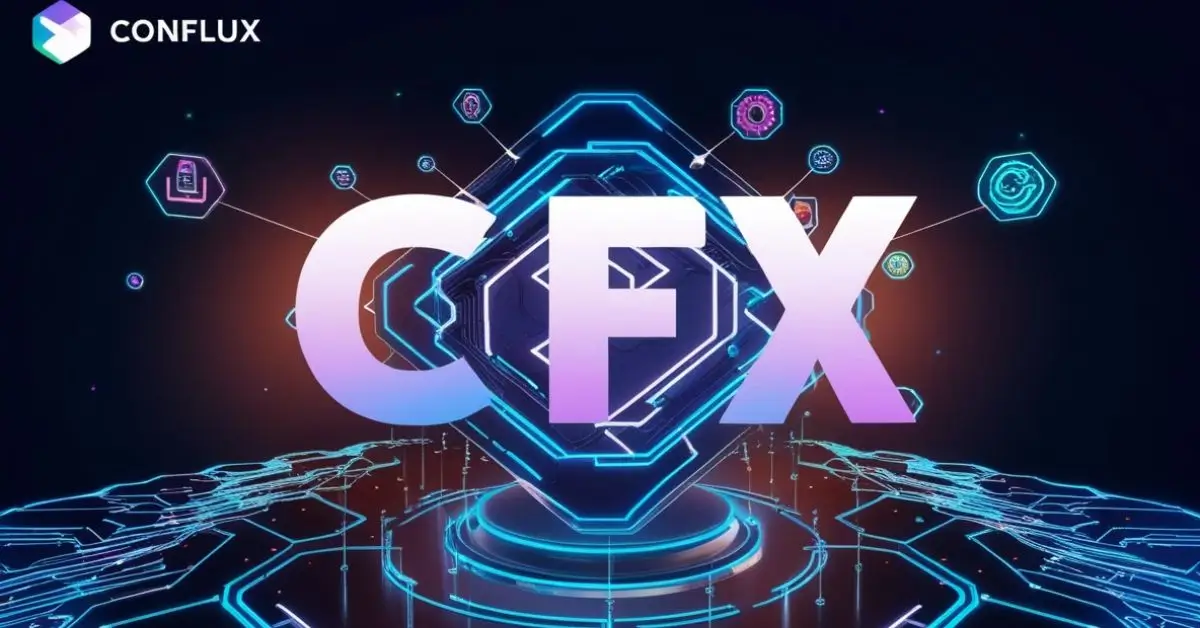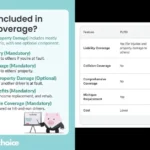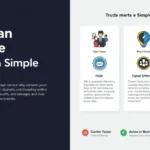CFX, short for Conflux, is a high-performance decentralized public blockchain that provides an ecosystem for decentralized applications (dApps), digital assets, and decentralized finance (DeFi) projects. As blockchain technology evolves, Conflux is emerging as a significant player, thanks to its ability to handle high throughput, scalability, and decentralization while maintaining security. One of the main use cases of CFX, Conflux’s native cryptocurrency, is facilitating transactions and incentivizing participants within its network. This article serves as an extensive guide on how to add CFX to your system or project, focusing on both technical and practical aspects.
Whether you are a developer integrating CFX into an application or a user looking to use Conflux for your transactions, this guide will walk you through every step of the process, offering insights into the platform’s features, its ecosystem, and how to make the most of it.
What is Conflux?
Conflux is a Layer 1 public blockchain network that addresses one of the biggest challenges in blockchain technology—scalability. Unlike other major blockchain platforms like Ethereum or Bitcoin, Conflux operates with a novel consensus mechanism called Tree-Graph, which significantly enhances its scalability while still maintaining the decentralization and security of the system. This means Conflux can process thousands of transactions per second, which is much higher than traditional blockchain platforms.
Conflux Network was launched in 2020, with a focus on providing a blockchain that is suitable for high-demand applications such as DeFi, NFTs (Non-Fungible Tokens), and enterprise-level applications. It offers low fees, fast transaction speeds, and the flexibility to handle large-scale dApps.
The native currency, CFX, powers the Conflux ecosystem by serving as the fuel for network operations, transaction processing, and governance.
Why Add CFX?
There are several reasons why adding CFX to your system or application could be beneficial:
- Scalability: Conflux can handle thousands of transactions per second, making it suitable for high-traffic applications.
- Low Transaction Costs: The platform offers comparatively low transaction fees, making it attractive for both developers and users.
- DeFi and NFT Integration: As DeFi and NFTs gain prominence, Conflux provides a suitable environment for these digital assets to thrive.
- Decentralization with Security: While Conflux offers fast processing speeds, it does not compromise on decentralization or security.
- China’s Compliance: Conflux is the only public blockchain that is legally compliant in China, making it an excellent choice for developers looking to target the Chinese market.
How to Add CFX: A Step-by-Step Guide
Now that you understand the benefits of Conflux and its native token CFX, let’s move on to how you can add CFX to your system or application. Depending on whether you’re a developer, an end-user, or an enterprise, there are different methods to add and integrate CFX.
Step 1: Setting Up a Wallet
Before you can add CFX to your system, you will need a Conflux-compatible wallet. Here are a few popular options:
- Conflux Portal: This is the official browser extension wallet for the Conflux Network, akin to MetaMask for Ethereum. It allows users to manage their CFX tokens and interact with dApps built on Conflux.
- Visit the Conflux Portal and download the browser extension for Chrome or Firefox.
- Follow the setup instructions to create a new wallet or import an existing one.
- Store your seed phrase securely as this will be the only way to recover your wallet.
- Trust Wallet: A multi-chain wallet that supports Conflux CFX, making it ideal for users who want a versatile solution for multiple blockchain networks.
- Ledger Hardware Wallet: If you prefer hardware wallets for added security, Ledger provides support for CFX.
Step 2: Obtaining CFX Tokens
Once your wallet is set up, you will need to acquire CFX tokens to use within the Conflux ecosystem. You can obtain CFX tokens through various methods:
- Exchanges: Several cryptocurrency exchanges list CFX, including Binance, OKEx, and Gate.io. You can purchase CFX using other cryptocurrencies like Bitcoin (BTC), Ethereum (ETH), or stablecoins (USDT).
- Sign up for an account on your preferred exchange.
- Deposit funds (crypto or fiat).
- Navigate to the CFX trading pair (e.g., CFX/USDT) and execute your buy order.
- Withdraw the purchased CFX to your wallet for use.
- Staking: Conflux offers a staking program where users can stake their CFX tokens to earn rewards over time. By staking CFX, you can earn additional tokens while supporting the network’s security.
Step 3: Adding CFX to Your dApp or Project
If you are a developer looking to integrate CFX into your dApp or project, there are several steps you need to follow:
3.1: Set Up a Node
Conflux offers an open-source implementation of its blockchain that allows developers to set up a full node. This node will help you interact with the network, validate transactions, and deploy smart contracts.
- Download Conflux Full Node: Visit the Conflux GitHub repository to download the full-node client.
- Install Prerequisites:
- Rust programming language and Cargo (the Rust package manager).
- Docker (optional but recommended for ease of use).
- Set Up the Node:
- Follow the installation guide on GitHub to configure and run your node.
- Ensure your node is synchronized with the Conflux network, which may take some time depending on your internet connection.
3.2: Smart Contract Development
Conflux supports smart contract development using Solidity, the same language used for Ethereum. If you are familiar with developing smart contracts for Ethereum, you will find it easy to get started with Conflux.
- Solidity Compiler: Use the Solidity compiler to write your smart contracts. You can either use a local development environment or an online IDE like Remix.
- Deploy Contracts: Once your contract is ready, you can deploy it on the Conflux network using your node or by interacting with the Conflux blockchain through APIs. The contract deployment process is similar to Ethereum but uses the Conflux RPC methods.
- Interacting with dApps: If you are building a decentralized application (dApp), you will need to connect your dApp to the Conflux blockchain using JavaScript libraries like web3.js.
3.3: Integration with Wallets
After deploying your dApp, ensure it can interact with wallets like Conflux Portal. This will allow users to send and receive CFX directly within your application.
- CFX Payment Gateway: If your project involves payments, integrate a CFX payment gateway that accepts transactions in CFX.
- WalletConnect Integration: Use WalletConnect to allow mobile wallet users to interact with your dApp seamlessly.
Step 4: Security Best Practices
Blockchain projects, especially those involving token transactions and smart contracts, are prone to vulnerabilities. Here are some security best practices when adding CFX to your project:
- Smart Contract Audits: Before deploying your smart contract, have it audited by a professional firm to identify any potential vulnerabilities.
- Cold Storage: If you are storing large amounts of CFX, consider using a hardware wallet like Ledger for cold storage.
- Private Key Management: Never share your private key or seed phrase with anyone. Use multi-signature wallets for added security.
Use Cases of CFX in Various Sectors
DeFi
CFX plays a vital role in decentralized finance (DeFi). By using Conflux, DeFi projects can benefit from its scalability and low transaction costs. Some popular DeFi applications on Conflux include decentralized exchanges (DEXs), lending platforms, and yield farming protocols.
NFTs
Non-fungible tokens (NFTs) have gained immense popularity, and Conflux provides a robust platform for creating and trading NFTs. Artists and creators can mint their digital assets on Conflux without facing high transaction fees, making it more accessible.
Enterprise Applications
Conflux is increasingly being adopted for enterprise-level applications, especially in China. It is used in supply chain management, healthcare, and finance sectors for securely transferring data and assets.
Conclusion
Adding CFX to your system or project opens up numerous possibilities in blockchain development, from high-performance dApps to decentralized finance and NFTs. With its scalability, low transaction costs, and compliance in China, Conflux offers a unique opportunity for developers and enterprises alike. Whether you are a developer looking to build on Conflux or a user interested in utilizing CFX for transactions, the steps outlined in this guide should provide a comprehensive starting point.
By setting up a Conflux wallet, obtaining CFX tokens, deploying smart contracts, and adhering to security best practices, you can unlock the full potential of the Conflux network. As the ecosystem continues to grow, the demand for efficient and scalable blockchain solutions like Conflux will undoubtedly increase.











